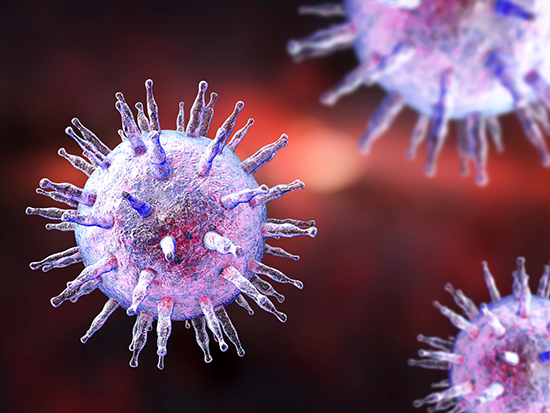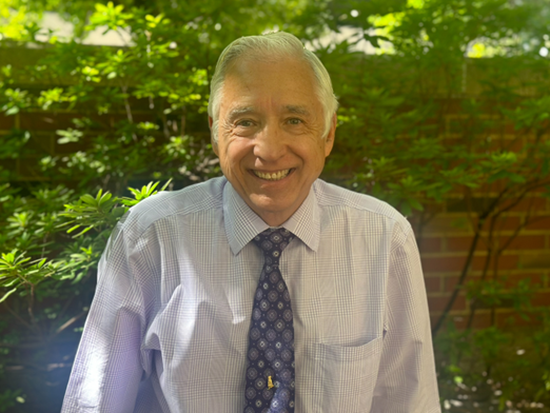 This is the first direct evidence that resident microbiota can have a significant impact on the establishment and pathology of infection by two different human-specific pathogens.The gut microbiome, the mix of microbes in the gut, can increase the risk of infection by HIV and Epstein-Barr virus, researchers Angela Wahl, Ph.D., and J. Victor Garcia, Ph.D., and their University of North Carolina at Chapel Hill School of Medicine colleagues report in the journal Nature Biotechnology. Wahl is now an associate professor in the University of Alabama at Birmingham Department of Microbiology, and Garcia is the incoming chair of the UAB Department of Microbiology.
This is the first direct evidence that resident microbiota can have a significant impact on the establishment and pathology of infection by two different human-specific pathogens.The gut microbiome, the mix of microbes in the gut, can increase the risk of infection by HIV and Epstein-Barr virus, researchers Angela Wahl, Ph.D., and J. Victor Garcia, Ph.D., and their University of North Carolina at Chapel Hill School of Medicine colleagues report in the journal Nature Biotechnology. Wahl is now an associate professor in the University of Alabama at Birmingham Department of Microbiology, and Garcia is the incoming chair of the UAB Department of Microbiology.
As described by Kendall Daniels, a communications specialist at the UNC School of Medicine, the gut microbiome, over the past decade, has captured great interest by scientists and non-scientists alike. Research shows that bacteria and other gut microbes play supporting roles in immunity, metabolism, digestion and the defense against “bad bacteria” that wish to invade our bodies.
The new research led by Wahl, Garcia and R. Balfour Sartor, M.D., a professor of medicine at the UNC School of Medicine — reveals that the microbiome may not always be protective against human pathogens.
Using a first-of-its-kind precision animal model with no microbiome, researchers have shown that the microbiome has a significant impact on the acquisition of Epstein-Barr virus, or EBV, and human immunodeficiency virus-1, or HIV, and the microbiome also affects the course of disease.
“These findings offer the first direct evidence that resident microbiota can have a significant impact on the establishment and pathology of infection by two different human-specific pathogens,” Wahl said.
For the discovery, Wahl and Garcia created a “humanized” mouse model that mimics the human immune system. The humanized-mouse model can replicate a virus the way a human does. But they also needed to compare a conventional humanized-mouse model to one without a microbiome. This meant that they needed to create a first-of-its-kind mouse model that was both humanized and free of bacteria.
Wahl, an expert in developing in-vivo models for human pathogens, and former UNC graduate student Morgan Chateau, Ph.D., used a custom surgical isolation chamber to humanize the animals while keeping them from encountering any germs from food, our skin, the air or any other source. This “big sterile bubble” has specialized glove compartments and a microscope.
“This had never been done before,” Wahl said. “We humanized the mice and did our viral exposure experiments under strict germ-free conditions. Technically, it was very challenging.”
 J. Victor Garcia, Ph.D. HIV is a retrovirus that infects primarily human CD4+ T cells and is acquired mainly through the gastrointestinal tract. Rectal exposure in men who have sex with men accounts for more than half of new HIV infections. Breastfeeding is an oral exposure that can transmit HIV to infants.
J. Victor Garcia, Ph.D. HIV is a retrovirus that infects primarily human CD4+ T cells and is acquired mainly through the gastrointestinal tract. Rectal exposure in men who have sex with men accounts for more than half of new HIV infections. Breastfeeding is an oral exposure that can transmit HIV to infants.
Wenbo Yao, Ph.D., co-first author, found that rectal HIV acquisition was twofold higher in animals colonized with a resident microbiome compared to germ-free animals. Similarly, oral HIV acquisition was more than threefold higher in animals colonized with resident microbiota compared to germ-free animals. Researchers also noticed that animals colonized with resident microbiota had HIV-RNA levels that were up to 34 times higher in blood plasma and more than 1,000 times higher in tissues compared to germ-free mice.
Sartor says their innovative HIV findings may serve as a foundation for others to develop new clinical approaches and therapies. “These findings open up a whole new door,” Sartor said. “Would it be possible to alter the gut microbiota by decreasing the bacteria, fungi and viruses that might increase expansion of the HIV infection? Or conversely, can we help patients build up microbes that would prevent that expansion and could work synergistically with antivirals to clear the HIV?”
The mice with a resident microbiota had an increased frequency of CCR5+CD4+ T cells — the main target of HIV infection throughout the gut — as compared to germ-free animals. Thus, the enhanced HIV acquisition and replication may be due, in part, to an increased density of target cells for local infection.
“This is a finding of great significance,” Wahl said. “Everyone has a unique composition of microbes that colonize their gut. In the future, it will be important to evaluate how this diversity among people affects their risk for HIV acquisition and the subsequent course of disease.”
Researchers also tested infection by EBV, a DNA herpesvirus that infects B cells and can cause mononucleosis. Nearly 95 percent of adults harbor non-symptomatic EBV infections; but in some people with compromised immune systems, EBV infection can influence the development of cancers such as Hodgkin’s lymphoma, non-Hodgkin lymphoma, Burkitt’s lymphoma and nasopharyngeal carcinoma.
 Angela Wahl, Ph.D.Wahl and Garcia found that the normal microbiome mice, after exposure to EBV, developed large tumors in a variety of organs, including the spleen, liver, kidneys and stomach. These tumors were virtually absent in germ-free mice infected with EBV. Understanding the possible mechanisms for this difference will require further study.
Angela Wahl, Ph.D.Wahl and Garcia found that the normal microbiome mice, after exposure to EBV, developed large tumors in a variety of organs, including the spleen, liver, kidneys and stomach. These tumors were virtually absent in germ-free mice infected with EBV. Understanding the possible mechanisms for this difference will require further study.
“We had two human pathogens that are different in every possible way,” Garcia said. “The type of cell that they are infecting, the type of disease that they cause and the types of viruses that they are are completely different. Yet, the microbiome exacerbates the disease that each of those viruses causes.”
The researchers will now try to pinpoint the factors that determine whether the microbiome plays a role in the persistence of HIV and EBV infections throughout the body and figure out whether the microbiome also affects other human-specific pathogens.
Wahl, Garcia and Sartor want to understand how the microbiome contributes to HIV and EBV infections, which specific microbial strains aid viral replication and disease, and which microbial strains may protect the host from the viruses.
Wahl and Garcia hope their findings will open a new area of exploration of the microbiome’s role in diseases caused by human-specific pathogens.
“At the heart of all this is that we have created a new series of models that will allow investigators to ask questions they could never ask before,” Garcia said.
At UAB, Microbiology is a department in the Marnix E. Heersink School of Medicine.